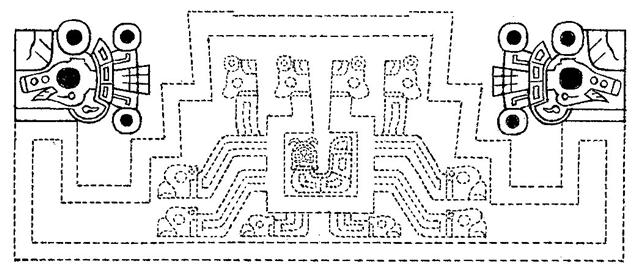1. The Southern Cross (Crux) is an important time indicator in the night, somewhat like Cassiopeia or Ursa Major in the north. By looking at the orientation of the constellation it is quickly seen what time it is, if dawn is close ahead or if it still is close to midnight. Allen: "... Whittier said, in his Cry of a Lost Soul: 'The Cross of pardon lights the tropic skies'; which is correct for our day, as it is not now entirely visible above 27º 30' of north latitude. It was last seen on the horizon of Jerusalem - 31º 46' 45'' - about the time that Christ was crucified. But 3000 years previously all its stars were 7º above the horizon of the savages along the shores of the Baltic Sea, in latitude 52º 30' ... Von Humboldt adds: The two great stars, which marks the summit and the foot of the Cross, having nearly the same right ascension, it follows that the constellation is almost perpendicular at the moment when it passes the meridian. This circumstance is known to the people of every nation situated beyond the Tropics or in the southern hemisphere. It has been observed at what hour of the night, in different seasons, the Cross is erect or inclined. It is a time piece, which advances very regularly nearly four minutes a day, and no other group of stars affords to the naked eye an observation of time so easily made. How often have we heard our guides exclaim in the savannahs of Venezuela and in the desert extending from Lima to Truxillo, 'Midnight is past, the Cross begins to bend' ... Crux lies in the Milky Way, - here a brilliant but narrow stream three or four degrees wide, - and is noticeable from its compression as well as its form, being only 6º in extent from north to south, and less in width, the upper star a clear orange in color, and the rest white; the general effect being that of a badly made kite, rather than a cross ..." Posnansky has (in his Tihuanacu the Cradle of American Man) noted a resemblance between Crux and engravings on the Gateway of the Sun (for the full Sun figure see in chapter 26):
"... Schematic drawing of the 'socle of the central figure of the Sun Door' on which can be seen the 'eyes' with 'Star' signs on the coronas and the 'ring nose' as in the position of the constellation Southern Cross at nightfall at the solstices ..." Acrux (α Crucis) is the 'eye' in the peculiar 'bird heads' and β is also pictured greater than γ and δ. However, γ and δ do not seem to be alike in brightness according to modern star charts:
"Gould thinks it [γ] variable, for it has been variously estimated, even by the same observer, as from 1.8 to 2.4." (Allen) Perhaps also ε Crucis and some other lesser star is depicted on the socle of the Sun Door - though not with a star-sign but with what could be 'tadpoles'. |

